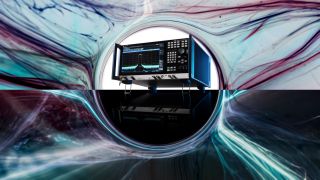Signal and spectrum analyzer technology | Spectrum analysis method for measuring phase noise
Phase noise and spectrum analyzer resolution bandwidth
Author: Paul Denisowski, Test & measurement expert
The spectrum analyzer is the oldest, most straightforward and most popular way to measure phase noise. The basic steps are quite simple. You start by measuring the carrier power of the device under test (DUT). Then, you move to a given frequency offset from the carrier, i.e., to a point in the sideband, and measure the phase noise power contained in a 1 Hz bandwidth. If you subtract the carrier power from the noise power, the result is phase noise in dBc per Hz at the given offset. Usually, these measurements are repeated for various offset values, and the results can be displayed either graphically or as individual “spot noise” values in a table.














